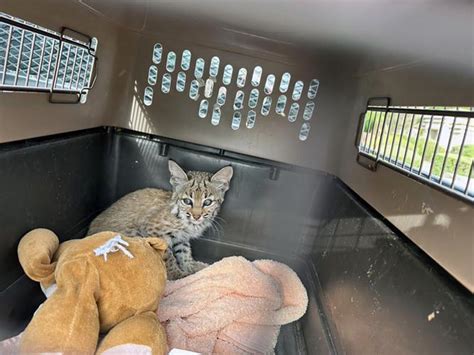
An American Bully dog named Brutus is captivating audiences worldwide with his striking heterochromia, a rare genetic condition that gives him one blue eye and one brown eye, an occurrence his owner describes as “one in a million.”
Brutus, a four-year-old American Bully from St. Cloud, Florida, has become an internet sensation due to his distinctive eyes. His owner, Erin Brown, frequently shares photos and videos of Brutus on social media platforms like TikTok and Instagram, where he has amassed a significant following. The allure of Brutus lies not only in his unique appearance but also in his charming personality, which shines through in the content Brown creates. Heterochromia, the condition causing his different-colored eyes, occurs when there is a variation in melanin, the pigment that gives color to the eyes, skin, and hair. This condition is relatively uncommon, making Brutus a truly exceptional canine.
Brown stated, “His eyes are what people notice first. He has one blue eye and one brown eye, which is really striking. People are always asking about it.”
The internet’s reaction to Brutus has been overwhelmingly positive, with many users expressing admiration for his unique look. Brown frequently receives comments such as, “He’s gorgeous!” and “What a beautiful dog!” The comments highlight how Brutus’s unusual appearance has resonated with a wide audience.
Beyond his physical attributes, Brutus’s story also touches upon the growing popularity of American Bully dogs. The breed, known for its muscular build and affectionate demeanor, has gained traction in recent years. However, it has also faced some controversy and misconceptions, making Brutus an ambassador of sorts, showing the breed’s gentle and loving nature.
Heterochromia in dogs can be caused by various factors, including genetics, injury, or underlying medical conditions. In Brutus’s case, it is believed to be a genetic trait, adding to his unique charm. While heterochromia doesn’t typically affect a dog’s vision, it certainly makes them stand out in a crowd. Brutus has become a symbol of individuality and beauty, proving that different is indeed extraordinary.
The Rise of Brutus: A Social Media Phenomenon
The story of Brutus is a testament to the power of social media in catapulting ordinary pets into online stardom. Erin Brown’s dedication to showcasing Brutus’s unique features and personality has transformed him into an internet sensation. His TikTok and Instagram accounts serve as a virtual gallery of his daily life, capturing moments that highlight his playful nature and striking appearance.
Brown’s content strategy focuses on creating engaging and relatable content that resonates with dog lovers. She captures Brutus’s day-to-day activities, showcasing his playful interactions, training sessions, and moments of relaxation. This approach has not only garnered a loyal following but has also provided an educational platform for those interested in learning more about the American Bully breed and heterochromia.
“I started posting pictures of Brutus because I thought he was so handsome,” Brown said. “I never expected him to become this popular. It’s been a fun journey.”
The comments section of Brutus’s social media accounts is filled with messages of admiration and appreciation. Many users express that seeing Brutus’s posts brightens their day, while others share stories of their own pets with unique characteristics. This sense of community and shared appreciation further fuels Brutus’s online presence.
Understanding Heterochromia in Dogs
Heterochromia, derived from the Greek words “heteros” (different) and “chroma” (color), refers to the variation in iris coloration within the same individual. In dogs, this condition can manifest in two primary forms: complete heterochromia, where each eye is a different color, as seen in Brutus; and partial heterochromia, where there are different colors within the same iris.
The condition arises due to variations in the concentration and distribution of melanin, the pigment responsible for coloration in the iris. Melanin production is influenced by genetics, with specific genes determining the amount and type of pigment deposited in the iris. In cases of heterochromia, these genes may not function uniformly in both eyes, leading to differing levels of pigmentation.
Several factors can contribute to heterochromia in dogs, including:
-
Genetics: This is the most common cause, particularly in certain breeds predisposed to the condition. Breeds like Siberian Huskies, Australian Shepherds, and Dalmatians are more likely to exhibit heterochromia due to specific genetic traits.
-
Congenital Conditions: In some cases, heterochromia may be associated with congenital conditions present at birth, such as Waardenburg syndrome, which affects pigmentation and hearing.
-
Injury or Trauma: Trauma to the eye can damage the pigment-producing cells in the iris, leading to changes in coloration. This type of heterochromia is often acquired rather than inherited.
-
Medical Conditions: Certain medical conditions, such as uveitis (inflammation of the uveal tract), can also cause changes in iris pigmentation.
While heterochromia is often harmless and doesn’t affect a dog’s vision, it’s essential to rule out any underlying medical causes through a veterinary examination. A veterinarian can conduct a thorough eye exam to assess the overall health of the eyes and identify any potential issues.
The American Bully Breed: A Profile
The American Bully is a relatively new breed, having emerged in the late 20th century in the United States. It was developed from a combination of American Pit Bull Terriers and American Staffordshire Terriers, with some influence from other bully breeds. The goal of breeders was to create a companion dog with a muscular build, gentle temperament, and stable disposition.
The American Bully is characterized by its stocky, muscular physique and broad head. It comes in various sizes, ranging from pocket to XL, each with slightly different height and weight standards. Despite its imposing appearance, the American Bully is known for its friendly and affectionate nature.
Key characteristics of the American Bully breed include:
-
Temperament: American Bullies are typically known for their friendly, affectionate, and gentle temperament. They are often good with children and other animals, making them excellent family pets.
-
Appearance: The breed has a muscular build, broad head, and a short, smooth coat that comes in various colors and patterns.
-
Energy Level: American Bullies have moderate energy levels and require regular exercise to stay healthy and happy. Daily walks, playtime, and mental stimulation are essential for their well-being.
-
Training: American Bullies are intelligent and trainable, but they require consistent and positive reinforcement training methods. Early socialization is also crucial to ensure they develop into well-adjusted adults.
Despite their positive traits, American Bullies have faced some controversy and misconceptions. Due to their lineage, they are often mistaken for more aggressive breeds, leading to breed-specific legislation and restrictions in some areas. However, responsible breeding practices and proper training can help showcase the breed’s true nature as a loving and loyal companion.
The Broader Context: Animals with Heterochromia in Popular Culture
Brutus joins a lineage of animals with heterochromia who have captured the public’s imagination. The unique beauty of different-colored eyes has long been celebrated, both in real life and in fictional portrayals. Animals with heterochromia often symbolize individuality, mystique, and a connection to the extraordinary.
In literature and film, animals with heterochromia are sometimes depicted as having special powers or a unique perspective on the world. This portrayal reinforces the idea that different is not only beautiful but also possesses a certain magic.
Real-life examples of animals with heterochromia include:
-
David Bowie, the cat: Named after the iconic musician, David Bowie the cat gained fame for his complete heterochromia, with one blue eye and one green eye.
-
Various dog breeds: As mentioned earlier, several dog breeds, including Siberian Huskies and Australian Shepherds, are predisposed to heterochromia.
-
Horses: Heterochromia can also occur in horses, adding to their striking appearance.
The fascination with animals with heterochromia reflects a broader appreciation for diversity and individuality. It reminds us that beauty comes in many forms and that embracing our differences can lead to unique and extraordinary experiences.
Expert Opinions on Heterochromia and Breed Characteristics
Veterinarians and animal behaviorists offer valuable insights into the phenomenon of heterochromia and the characteristics of the American Bully breed. Their expertise helps to dispel myths, provide accurate information, and promote responsible pet ownership.
According to Dr. Emily Carter, a veterinarian specializing in canine ophthalmology, “Heterochromia is generally a benign condition that doesn’t affect a dog’s vision. However, it’s important to rule out any underlying medical causes through a thorough eye exam. In most cases, it’s simply a genetic trait that makes a dog unique.”
Dr. Carter emphasizes the importance of understanding the specific causes of heterochromia in each individual case. “While genetics is the most common factor, it’s crucial to consider other potential causes, such as injury or inflammation. A comprehensive veterinary exam can help determine the underlying cause and ensure that the dog receives appropriate care.”
Animal behaviorist, Sarah Johnson, offers insights into the temperament and training needs of the American Bully breed. “American Bullies are often misunderstood due to their muscular appearance. However, they are typically friendly and affectionate dogs that thrive on human interaction. Early socialization and positive reinforcement training are essential to help them develop into well-adjusted adults.”
Johnson stresses the importance of responsible breeding practices in maintaining the breed’s positive temperament. “Responsible breeders prioritize temperament and health when selecting breeding pairs. This helps to ensure that American Bullies retain their gentle and loving nature, dispelling the myths and misconceptions that often surround the breed.”
The Future of Brutus and His Influence
As Brutus continues to gain popularity on social media, his influence extends beyond mere entertainment. He has become an advocate for embracing individuality, promoting breed awareness, and fostering a sense of community among pet lovers.
Erin Brown plans to use Brutus’s platform to raise awareness about heterochromia and the American Bully breed. She hopes to educate others about the importance of responsible pet ownership and to challenge the stereotypes that often surround certain breeds.
“I want Brutus to be more than just a cute face on the internet,” Brown said. “I want him to inspire others to embrace their differences and to see the beauty in everyone, regardless of their appearance or background.”
Brown also envisions partnering with animal shelters and rescue organizations to help find homes for other dogs in need. She believes that Brutus’s story can serve as a reminder that every dog deserves a loving home, regardless of their breed or appearance.
In conclusion, Brutus, the American Bully with the million-to-one eyes, has captured the world’s attention with his unique charm and captivating story. His journey from an ordinary pet to an internet sensation highlights the power of social media in celebrating individuality, promoting breed awareness, and fostering a sense of community. As Brutus continues to inspire others, he serves as a reminder that different is indeed extraordinary and that embracing our differences can lead to remarkable experiences. His story also underscores the importance of responsible pet ownership, dispelling breed-specific stereotypes, and advocating for animal welfare. Through his online presence, Brutus is not only entertaining but also educating and inspiring a global audience.
Frequently Asked Questions (FAQ)
-
What is heterochromia, and what causes it in dogs like Brutus?
- Heterochromia is a condition characterized by different-colored irises in the same individual. In dogs, it’s primarily caused by genetic factors affecting melanin distribution. It can also result from injury, trauma, or underlying medical conditions, though in Brutus’s case, it is believed to be genetic.
-
Is heterochromia harmful to dogs, and does it affect their vision?
- Generally, heterochromia is not harmful and does not affect a dog’s vision. However, it’s crucial to rule out any underlying medical conditions through a veterinary exam to ensure there are no other issues causing the color variation.
-
What is the American Bully breed, and what are its typical characteristics?
- The American Bully is a relatively new breed developed in the United States from American Pit Bull Terriers and American Staffordshire Terriers. They are known for their muscular build, broad head, and friendly temperament. They typically have moderate energy levels and require consistent training and socialization.
-
Why is Brutus so popular on social media?
- Brutus’s popularity stems from his striking heterochromia, his owner’s engaging content creation, and the breed’s unique appeal. His distinct appearance captures attention, while the content showcases his personality and daily life, resonating with a broad audience of dog lovers.
-
What are some misconceptions about the American Bully breed, and how does Brutus help to dispel them?
- One common misconception is that American Bullies are aggressive or dangerous due to their lineage. Brutus helps dispel this by showcasing the breed’s gentle and affectionate nature through his social media presence, promoting responsible pet ownership, and challenging stereotypes associated with the breed.
-
Are there other animals besides dogs that can have heterochromia?
Yes, heterochromia can occur in various animal species, including cats, horses, and even humans. The underlying causes and manifestations are similar across species, involving variations in melanin production and distribution.
- How does Erin Brown, Brutus’s owner, use social media to promote responsible pet ownership?
Erin Brown uses her platform to educate followers about the American Bully breed, dispelling misconceptions and highlighting their gentle nature. She also emphasizes the importance of proper training, socialization, and veterinary care, advocating for responsible pet ownership practices.
- What steps should a potential owner take if they are interested in adopting an American Bully?
Potential owners should research reputable breeders or rescue organizations specializing in American Bullies. They should inquire about the dog’s temperament, health history, and any specific needs. Additionally, potential owners should be prepared to provide consistent training, socialization, and a loving environment for the dog.
- Are there breed-specific legislations (BSL) that affect American Bullies, and how does this impact owners?
Yes, some regions have breed-specific legislation (BSL) that restricts or bans certain breeds, including American Bullies. This can impact owners by limiting where they can live with their dogs, requiring specific insurance coverage, or mandating muzzles in public. Owners should be aware of local BSL laws and advocate for fair and breed-neutral regulations.
- How does Brutus’s story contribute to the broader conversation about diversity and acceptance?
Brutus’s story celebrates individuality and uniqueness, demonstrating that differences can be beautiful and captivating. By embracing his heterochromia and showcasing his positive traits, Brutus encourages others to appreciate diversity and challenges narrow definitions of beauty, promoting a more inclusive and accepting perspective.
- What kind of veterinary care is essential for an American Bully dog?
American Bullies require regular veterinary check-ups, vaccinations, parasite prevention, and dental care. Due to their muscular build, they may also be prone to certain health issues, such as hip dysplasia and breathing problems, so proactive monitoring is crucial.
- How much exercise do American Bullies need, and what are some suitable activities for them?
American Bullies have moderate exercise needs, typically requiring at least 30-60 minutes of physical activity per day. Suitable activities include daily walks, playtime in a securely fenced yard, interactive games, and mental stimulation exercises like puzzle toys.
- What is the typical lifespan of an American Bully?
The typical lifespan of an American Bully is between 8 to 12 years, depending on factors such as genetics, diet, exercise, and overall health care.
- Are American Bullies good with children and other pets?
American Bullies are generally known to be good with children and other pets when properly socialized from a young age. Early socialization helps them develop positive interactions and reduces the risk of behavioral issues.
- What kind of training is recommended for American Bullies?
Consistent and positive reinforcement training methods are highly recommended for American Bullies. Early socialization, obedience training, and clear boundaries are crucial for developing well-behaved and well-adjusted dogs.
- How can potential owners find reputable American Bully breeders?
Potential owners can find reputable breeders by researching online directories, contacting breed-specific clubs or organizations, and seeking referrals from veterinarians or other pet professionals. Reputable breeders prioritize health, temperament, and responsible breeding practices.
- What are some of the common health problems that can affect American Bullies?
Common health problems that can affect American Bullies include hip dysplasia, elbow dysplasia, breathing difficulties (brachycephalic syndrome), skin allergies, and certain heart conditions. Regular veterinary check-ups and preventative care can help manage these issues.
- What kind of grooming do American Bullies require?
American Bullies have short, smooth coats that require minimal grooming. Regular brushing can help remove loose hair and maintain a healthy coat. Occasional bathing is also necessary, as well as routine nail trimming and ear cleaning.
- How can owners advocate for responsible American Bully ownership in their communities?
Owners can advocate for responsible ownership by educating others about the breed’s true nature, participating in community events, and demonstrating good citizenship. They can also support breed-neutral legislation and work to dispel negative stereotypes.
- What role does social media play in promoting positive perceptions of the American Bully breed?
Social media provides a platform for showcasing the positive traits of American Bullies, such as their affectionate nature, intelligence, and loyalty. By sharing heartwarming stories, photos, and videos, owners can help change perceptions and promote a more accurate and balanced view of the breed.









